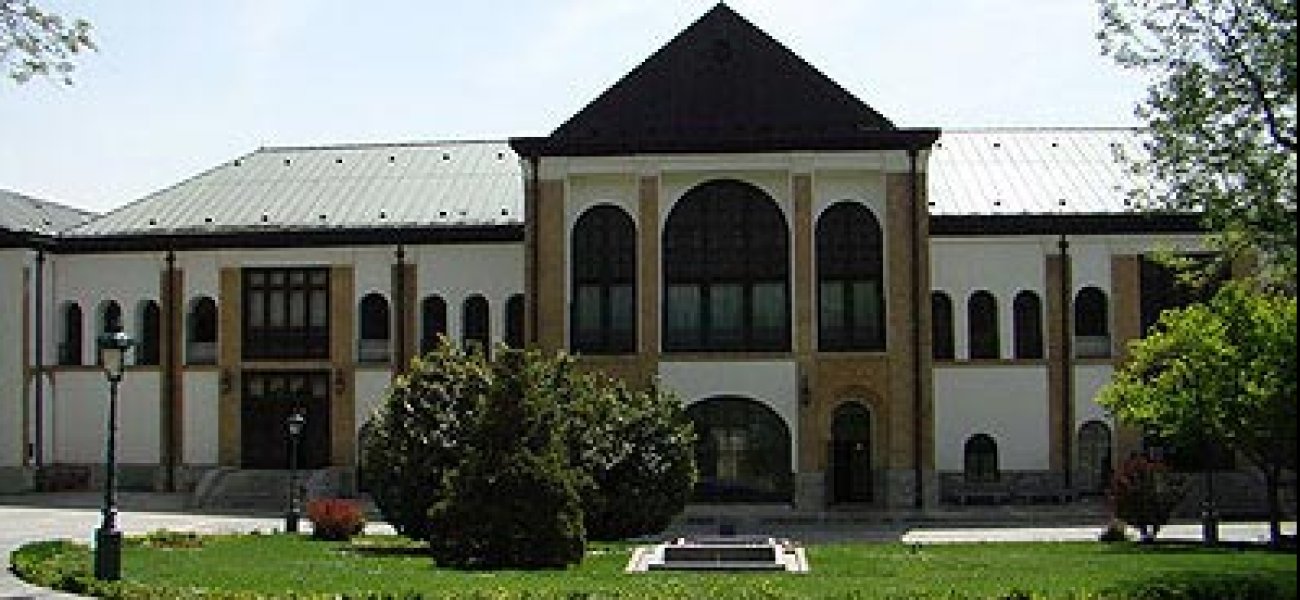Hour 15:38
21 Oct 25

.
In 1850, Naser al-Din Shah Qajar commissioned Haj Ali Khan Hajeb-od-Dowleh to construct a summer residence within Niavaran Garden in northern Tehran. Originally named Jahannama, the building was
In 1850, Naser al-Din Shah Qajar commissioned Haj Ali Khan Hajeb-od-Dowleh to construct a summer residence within Niavaran Garden in northern Tehran. Originally named Jahannama, the building was extensively renovated after thirty years of the Shah’s reign—considered at the time to represent a royal century—and was renamed Sahebqaranieh, meaning “Master of the Century.”During the reigns of Mozaffar al-Din Shah and Ahmad Shah, the Andaruni (private or family quarters) of the palace was reduced in size. Following the fall of the Qajar dynasty and the rise of Reza Shah Pahlavi, the building fell into neglect for a period. However, in 1939, on the occasion of the wedding of Mohammad Reza Pahlavi to Princess Fawzia of Egypt, Reza Shah ordered the palace to be refurbished to host distinguished guests. During this renovation, some internal walls were removed, auxiliary buildings were demolished, the palace was refurnished, and luxurious carpets from Golestan Palace were transferred here. The interiors were redecorated in European style, and a custom tableware set was even commissioned for the palace’s dining area. Despite these extensive preparations, the wedding ceremony was ultimately held elsewhere due to cold weather. The renovation process took eight months.
Sahebqaranieh Palace Museum consists of two floors:The upper floor served as the official office of Mohammad Reza Pahlavi from 1967 to 1978. It includes the Documents Room, Private and Military Meeting Rooms, Mirror Hall (also known as Jahannama), the Ambassadors’ Waiting Room, and a midday Resting Room.The lower floor, known as Howzkhaneh, features various sections such as the main Howzkhaneh (Pool Room), Korsikhaneh (Winter Sitting Area), Chaikhaneh (Tea Room), and a collection of Iranian artworks. With its intricate stucco work, Orsi (traditional Persian stained-glass sash windows), and elegant decorative elements, this floor is considered one of the most beautiful parts of the palace.The upper floor also houses two large paintings of Qajar princes, archival photographs from the era of Naser ed-Din Shah, and the original Constitutional Decree which was signed in this palace in 1906, along with documents and portraits from the Constitutional period. The Military Negotiations Room and the Mirror Hall are among the most prominent spaces in the palace, adorned with fine mirrorwork, stucco, and stained glass. Mohammad Reza Pahlavi’s desk is located in the northern Shahneshin (royal alcove) of the Mirror Hall. The southern Shahneshin displays historic weapons from Zand and Qajar eras, exquisite carpets from Tabriz and Kerman (notably by Amo-Oghli and Arjmand workshops), and porcelain vases from Meissen (Germany) and Sèvres (France).In the Private Meeting Room, Resting Room, and adjacent halls, visitors can view photographs of foreign leaders, official gifts, medals, and state decorations. At the eastern staircase stands a marble statue of Venus, welcoming visitors as they pass through.The palace’s furnishings were custom-made in France by order of Farah Diba, with crystal chandeliers from Czechoslovakia and Baccarat (France), and fine porcelain from Rosenthal (Germany), all contributing to the elegance and grandeur of the interior.Following the 1979 Islamic Revolution, a formal inventory of the palace’s contents was conducted. In 1995, restoration and structural reinforcement began. Mirrorwork, stucco, woodwork, and other artistic elements were carefully restored by skilled Iranian artisans. Several rooms were curated to display historical documents, photographs, and artifacts from Qajar and Pahlavi eras in accordance with modern standards.